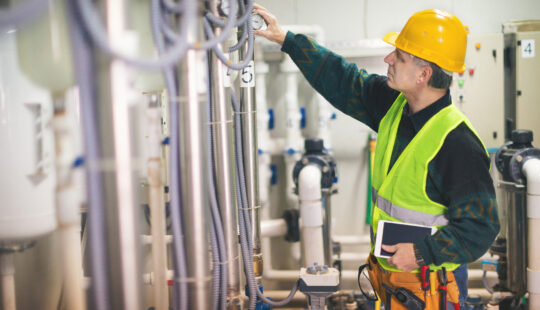What’s News
Utility-scale solar power generation in the U.S. is surging. This year, almost half the 46.1 gigawatts (GW) of generating capacity added to the grid will be solar, according to the U.S. Energy Information Administration, and solar has contributed more than 30% of all new capacity in five of the last six years.
SAP’s Take
“Domestically as well as globally, there is a strong mandate to move to a net-zero greenhouse gas economy,” said Stefan Wolf, vice president and a solar expert in SAP’s utilities industry business unit.
“The power generation industry today is one of the key producers of greenhouse gas and — because we are talking mostly about industrial size units — it is easier to change than transportation, for example, which has a tremendous number of small units, the cars we are all driving,” Wolf explained. “Solar is one of the proven renewable energy sources and it has location-based advantages over wind and hydro power.”
Photovoltaic (PV) power generation has the benefit of using hardly any moving parts other than the tracker, which keeps the solar panels positioned at an optimal angle to the sun. In addition, Wolf said that solar panels today are much more efficient than 10 years ago, enabling them to be very cost effective, even in less sunny regions. Wolf pointed out that utility-scale solar and residential or commercial rooftop solar are not an “either/or”; in fact, they can complement each other and complement other forms of power generation well too.
One downside to utility-scale solar is the need for a rather sizable area for the panels. This space is often only available far away from densely populated areas and commercial users, which means that like other forms of power generation, the electricity must be transported to where it is needed.
The biggest problem for any utility-scale energy generation is the need for large infrastructure investments to build the necessary transmission capacity. Power plants are typically owned by private investors and require planning permits and other approvals, which can take years to secure, while transmission lines are usually owned by a regulated, controlled utility. Authorizing those investments and getting agreement for the recovery of these investments through the energy rates is a much more complicated processes, unless there are government mandates and support.
Putting solar panels on rooftops and other urban and suburban surfaces is therefore still a good approach because producing power where it is needed avoids the cost of transporting it, while also supporting local resilience and independence. Having solar panels on the roofs of homes, businesses, schools and parking lots allows those owners to participate commercially in the energy network and reduce their overall energy costs.
But solar isn’t the only alternative energy source worth pursuing, according to Wolf: “PV-based energy generation will not solve our energy problems single-handedly. Wind and hydro are equally relevant. And there are other non carbon-based energy sources we have not started to tap into.”
For example, “If we look further into the future there is tidal energy. Compared to solar and wind, the tides can be forecast precisely so it could be a very dependable source of energy.” Wolf noted however, that a tremendous amount of research is still needed to understand the impact that tidal energy farms have on marine life, as well as their impact on other commercial uses of oceans.
Then there are nuclear options like fusion and small-scale fission. But those have their own challenges to be worked out.
Wolf said ultimately, “When it comes to empowerment of the consumer and bringing energy generation to the place of consumption, solar is hard to beat.”
Contact:
Ilaina Jonas, Senior Director of Global Public Relations, SAP
+1 (646) 923-2834, ilaina.jonas@sap.com



